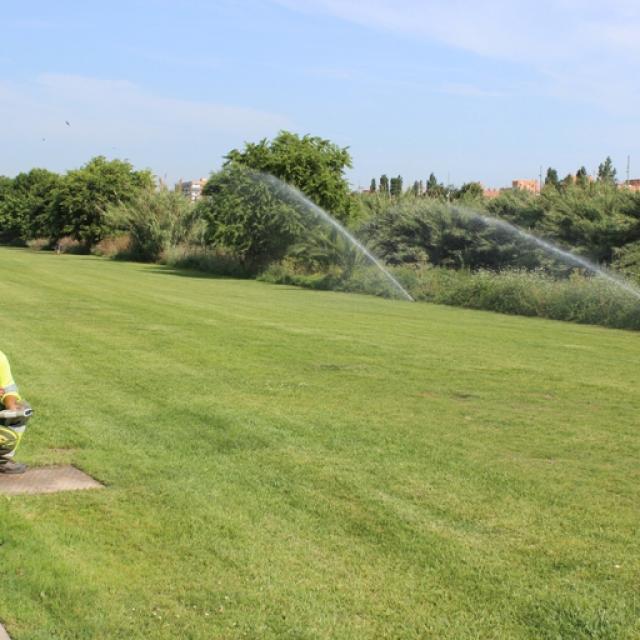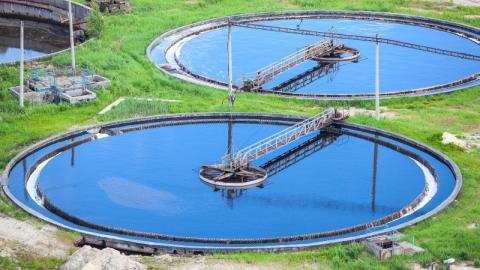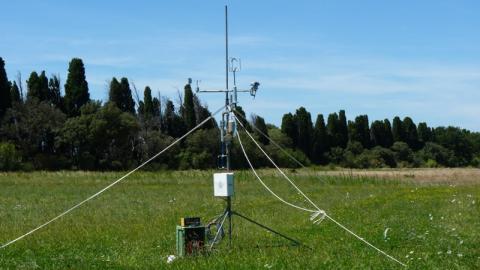Located in an outer suburb of Barcelona, the Besos Riverside Park extends for 9 kilometres on both sides of the river Besos as far as the sea. Covering a total area of 115 hectares, it is one of the largest green spaces in the metropolitan area of Barcelona, managed by a city consortium formed by the merger of four city districts. We met Mr. Père Miret Casanovas from the company Urbaser, which is responsible for maintaining the Park.

The park is divided into three zones: up river there is a water treatment plant that cleans the water, then there are 5 kilometres of lawns and cycle tracks open to the public and finally, near the sea, there is a natural reserve, which is the home to many species of birds and reptiles.
In the section open to the public, there are two strips of beautiful lush green lawns either side of the river. They are irrigated with water pumped from the River Besos. The river, which begins its course 70 kilometres upstream, is fed by non drinkable natural sources, rainwater and wastewater from the city of Barcelona. In the past, the city’s factories discharged their water directly into the river, but today the city’s water is treated before being released into the river. To the north of the Besos Riverside Park, there is an area of marshland between the confluence of the rivers Ripoll and Besos as well as the municipality of Montcada i Reixac and the public area further south. This area, measuring 3.8 kilometres long is not accessible to the public. Reeds are planted there that carry out the tertiary treatment of 30% of the effluent produced by the wastewater treatment plant of Montcada i Reixac, improving even more the quality of the water in the river.
The whole irrigation installation has been renovated, with the introduction of a centralised control system and the replacement of the sprinklers.
We then went in a 4 x 4 to the section open to the public. Mr. Miret explained to us the reason for choosing this vehicle. “Being high up in this vehicle will enable us to fully appreciate the park landscape”.
Arriving at the site, Mr. Miret asked one of the members of his team to start the irrigation system with his remote control. Each remote control will manage one station, i.e. 20 sprinklers in total.
The whole irrigation installation was renovated four years ago, notably with the introduction of a centralised control system and the replacement of the sprinklers. “Today, 80% of the sprinklers are Hunter medium size rotors with a range of 16-18 metres, the remainder being Toro or Regaber sprinklers”, explained Mr. Miret. The sprinklers are purple, a colour that is compulsory when irrigating with non drinkable water. The installation has 1,200 sprinklers and 244 valves.
A team of 6 to 8 people employed by the company Urbaser is responsible for cleaning, irrigation and security. The lawns have to be watered between 6 and 10 o’clock in the morning, before the visitors arrive. The water requirements are highest between June and September. During this period, the flow rate is 1,600 m3, which is at a higher level on account of the salinity and manganese content of the water. In fact, the water is of poor quality, meaning that more irrigation water has to be applied.
Another task of the maintenance employees is to evacuate the site when the river overspills onto the adjacent land. In fact, on a regular basis, the flow of the river is too high and rises above its banks. The lawns then become flooded. Mr. Miret and his team have to inform the visitors and ask them to leave the sites. They are assisted by the Besos Hydrological Warning System (SAHBE), a monitoring system that constantly analyses the meteorological and hydrological data and warns the authorities and users when there is a risk of flooding. In this way, the emergency plan can be activated well in advance. Fortunately, the floods only last a few hours and do not damage the lawns.
A weather station checks the temperature, wind and rain
We then returned to the 4 x 4 and crossed the river via the bridge. The left bank is wide enough to accommodate a strip of lawn and a cycle track. Mr. Miret continues: “We will soon be planting flowers on this side of the river between the lawns and the bamboos that grow along the banks. They will be watered by the sprinklers that are already in place. These flowers should add a touch of colour to the whole complex.”
Further on, along the cycle track, we can see the weather station which, explains Mr. Miret: “checks the temperature (the system is stopped when the temperature approaches zero), the wind (the system is stopped when the wind speed exceeds 30 km/h) and the rainfall (the system is stopped when it rains)”. The weather station is linked to the central control system located in the Urbaser control room.
Once in the vicinity of the weather station, we entered an underground control room containing the Azud filtration system, the Grundfos pumping station and an anti-UV device, which helps to prevent legionnaire’s disease. Legionnaire’s is an infectious disease caused by bacteria, the most well-known being Legionellapneumophila, which develops in natural or artificial fresh water systems or in organic media with a high iron, zinc or aluminium content that tends to encourage their growth. Every two months the water is analysed by the team and twice a year chorine has to be injected into the pipes as a preventive measure.
Heading towards the sea we were able to observe the last 450 metres of the river Besos before it flows into the Mediterranean Sea. This area, the last to be restored, is no longer accessible to the public given the fact that it is a small area (7 hectares) and on account of its great biological and natural value. It provides shelter for migratory birds and reptiles and it has a lagoon and a wide variety of plants.
The central control system, located in the Urbaser building
The Urbaser building is located 400 metres from the site. This physical proximity is vital as Mr. Miret and his team must be able to intervene quickly. The Samcla central control system is housed in these buildings. Mr. Miret quickly explained to us how the central control system works: “These are the valves that we can see on the screen and each valve controls a given area. If, for example, I want to stop irrigation so that we can mow the lawns, I have to deal with each valve, one by one, and that takes time. The problem with this system is that you have to work with each valve individually” explained Mr. Miret. He continues: “The system works with a radio, solving the problems of theft and losses, but it is often quite difficult to operate”.
He then showed us a graphic illustration of the daily water consumption. The system only has two flow meters, one for measuring the flow and one for monitoring the flow. “If someone steals a sprinkler, we can not be aware of that immediately. Therefore, it becomes even more necessary to be able to check the flow rate in the system”, observed Mr. Miret. Furthermore, every two weeks, Mr. Miret uses a programme that allows him to check whether a sprinkler has been stolen or broken during the mowing operation.
The Besos Riverside Park in Barcelona provides an excellent example of the use of treated wastewater for the irrigation of parks and gardens. Thus, even though the installation is not ideal, and although the central control system can still be improved, this installation represents a model that can be followed in the continuing quest to conserve the environment.


